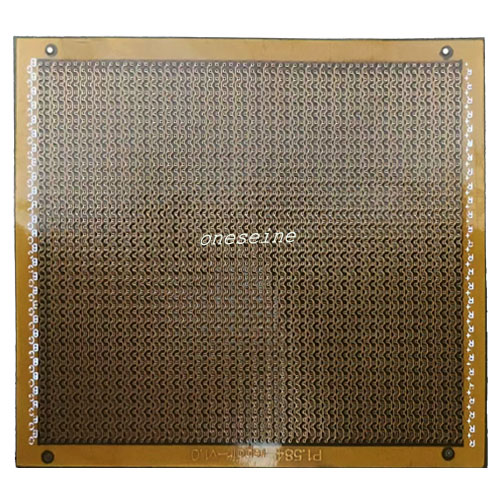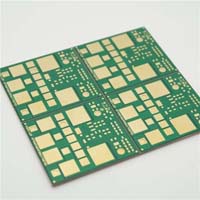Printed Circuit Boards
Best PCB Manufacturer Custom Flex Circuit Prototype Service
- flex circuit board
- 2 Layer
- Polyimide Flex
- Immersion gold(ENIG)
- Product description: rigid flex pcb design guidelines flex circuit board manufacturers semi flex pcb flex circuit board fpc flexible printed circuit all flex circuits flex pcb online quote flexible rigid pcb flex
Basic parameters:
Application: communication equipment, tablet computer
Type: double-sided FPC circuit boardLine width/line spacing: 0.12mm/0.12mm
Size: 180 * 180mm
Tolerance: ± 0.03mm
Thickness: 0.1mm
Reinforcement: 0.225mm PI reinforcement on the reverse side
What are some specialized soldering techniques used for flex PCBs?
There are several specialized soldering techniques that are commonly used for the assembly of components on flex PCBs to address the unique challenges posed by the flexibility of the board. Here are some of the key techniques:
1. Reflow Soldering:
- Reflow soldering is a widely used technique for flex PCB assembly.
- The flex PCB is placed in a reflow oven, where the solder paste is heated to its melting point, forming reliable solder joints between the components and the board.
- Reflow soldering allows for precise control over the heating profile, which is essential for maintaining the integrity of the flexible substrate and ensuring consistent solder joint quality.
2. Wave Soldering:
- Wave soldering is another technique employed for flex PCB assembly, particularly for through-hole components.
- In this process, the flex PCB is passed over a wave of molten solder, allowing the solder to flow into the plated-through holes and form the necessary connections.
- Wave soldering is often preferred for larger components or interconnections between rigid and flexible sections of a rigid-flex PCB.
3. Selective Soldering:
- Selective soldering is a targeted approach used for flex PCB assembly.
- This technique involves the use of a soldering tip or nozzle to selectively apply solder to specific locations on the flex PCB, minimizing the heat exposure to the surrounding areas.
- Selective soldering is advantageous for flex PCBs with components located near the bend lines or in areas that require higher flexibility.
4. Laser Soldering:
- Laser soldering is an emerging technique for flex PCB assembly.
- In this method, a laser beam is used to heat and melt the solder, forming the necessary connections between the components and the flex PCB.
- Laser soldering offers precise control over the heat input, reducing the risk of damage to the flexible substrate and allowing for concentrated soldering in specific areas.
5. Conductive Adhesives:
- In some cases, conductive adhesives are used instead of traditional solder for component attachment on flex PCBs.
- Conductive adhesives, such as epoxy-based or polymer-based adhesives, can provide reliable electrical connections while offering better flexibility and resistance to mechanical stress.
- This approach is particularly beneficial for flex PCBs that require high flexibility or for applications where traditional soldering may not be feasible.
The selection of the appropriate soldering technique for flex PCB assembly depends on factors such as the specific design requirements, component placement, and manufacturing capabilities. Consulting with experienced flex PCB manufacturers or assembly service providers can help identify the most suitable soldering approach for a given flex PCB project.
What are the key considerations when selecting the appropriate soldering technique for flex PCB assembly?
When selecting the appropriate soldering technique for flex PCB assembly, there are several key considerations that need to be taken into account:
1. Flexibility Requirements:
- The degree of flexibility required for the flex PCB is a crucial factor in choosing the right soldering technique.
- Highly flexible applications may benefit more from techniques like selective soldering or the use of conductive adhesives, which can better withstand bending and flexing without compromising the solder joints.
- Less flexible or rigid-flex PCBs may be better suited for more conventional techniques like reflow or wave soldering.
2. Component Placement and Density:
- The placement and density of components on the flex PCB can impact the choice of soldering technique.
- For complex layouts with components near the bend lines or high-density areas, techniques like selective soldering or laser soldering may be preferred to target specific locations and minimize the heat exposure to the surrounding areas.
- For more uniform component placement, reflow or wave soldering may be more appropriate.
3. Thermal Management:
- The thermal characteristics of the flex PCB and the components must be considered when selecting the soldering technique.
- Flex PCBs often have lower thermal mass and conductivity compared to rigid PCBs, requiring careful control of the heat input during soldering to prevent damage to the substrate or components.
- Techniques like laser soldering or selective soldering can provide more precise thermal management, whereas reflow or wave soldering may require additional measures to mitigate the thermal impact.
4. Solder Joint Reliability:
- The long-term reliability of the solder joints is a critical consideration, especially for flex PCBs that will undergo repeated bending or flexing during their service life.
- Techniques like the use of conductive adhesives or specialized solder paste formulations can enhance the mechanical reliability of the solder joints on flex PCBs.
5. Manufacturing Capabilities and Costs:
- The available manufacturing capabilities and equipment within the flex PCB assembly facility should be taken into account.
- Some soldering techniques, such as laser soldering or selective soldering, may require specialized equipment and expertise, which can impact the overall manufacturing costs and availability.
- The production volume and scale of the flex PCB assembly may also influence the choice of soldering technique, as certain methods may be more cost-effective for larger production runs.
By carefully evaluating these key considerations, flex PCB designers and manufacturers can select the most appropriate soldering technique that balances the flexibility requirements, component assembly needs, thermal management, solder joint reliability, and manufacturing capabilities to ensure the successful assembly of flex PCBs.
Categories
Latest News
Contact Us
Contact: Ms Tracy
Phone:
Tel:
Add: BludingA,Shixiaganglian Industrial Park,Shajing,Baoan,Shenzhen,China




 Tracy
Tracy